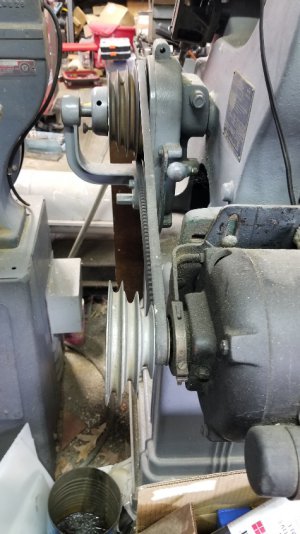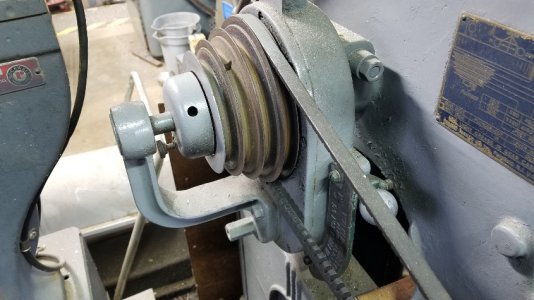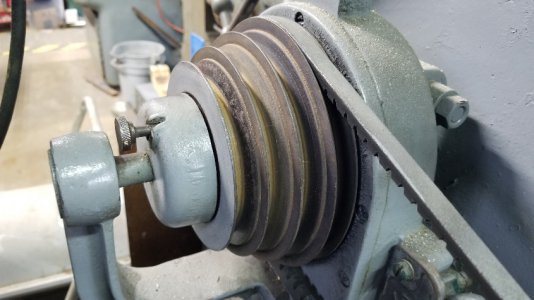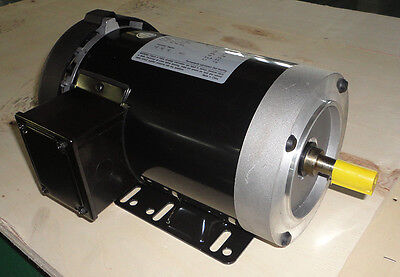I have a Walker Turner band saw with 2 speed gear box as it is wood and metal capable. It has a 1725 single phase, 120V, 1/2HP motor on it. From what I have been able to gather, this is not the original configuration, as it should have come with a 3 phase motor that turned somewhere around 1100 RPM. Since, at the lowest speed, it's still a bit fast for metal, I am researching my options for slowing the motor down. I AM using it to cut metal now, with a bi-metal blade, and not having any issues, but I am thinking I should slow it down if I can do so economically.
The possibilities I know of include:
Rheostat, not a good option because of the reduction in voltage lowering torque too much. Also, it may kick in the startup circuit.
VFD: I have a 4KW VFD sitting on a shelve, but I do not know if its output can be single phase and I may get the startup circuit problem.
Change the motor over to 3 phase and use the VFD: This seams possible, with my limited knowledge. Can I just remove the start capacitor and go around the startup circuit and run the single phase motor as a 3 phase motor?
Ideas and advice appreciated.
Thanks,
Chris
The possibilities I know of include:
Rheostat, not a good option because of the reduction in voltage lowering torque too much. Also, it may kick in the startup circuit.
VFD: I have a 4KW VFD sitting on a shelve, but I do not know if its output can be single phase and I may get the startup circuit problem.
Change the motor over to 3 phase and use the VFD: This seams possible, with my limited knowledge. Can I just remove the start capacitor and go around the startup circuit and run the single phase motor as a 3 phase motor?
Ideas and advice appreciated.
Thanks,
Chris






